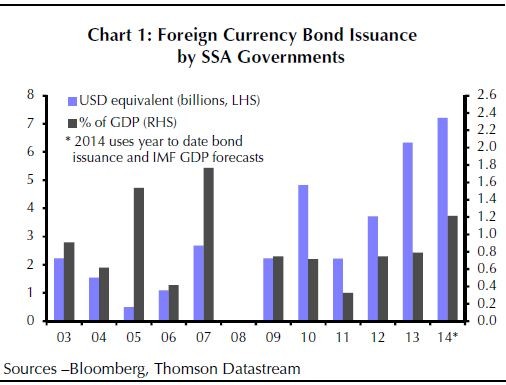Bonds are risky too especially in times like now
Post on: 12 Апрель, 2015 No Comment

Moneylife Investing Bonds & Currencies Bonds are risky too, especially in times like now
30249
Bonds are risky too, especially in times like now
William Gamble | 17/12/2012 01:27 PM |
Investors like bonds because they feel that they are safer than equities and get regular income. But bonds offer little transparency in a world where risk information is intentionally distorted
The actions of the central banks have certainly encouraged the bond market. This has been true since the former US Federal Reserve chairman, Alan Greenspans program to intervene in markets when they were falling, but not when they were rising. The interest rate suppression of the so called Greenspan put encouraged steady growth, but a huge increase in debt. Hyman Minsky, an American economist, argued that an overleveraged situation does not require excessive optimism, merely excessive certitude in that interest rates will not go up. This eventually leads to the dreaded Minsky moment, a crash following speculation using borrowed money. Ben Bernanke, Greenspans successor, isnt worried. He has outdone his predecessor in distorting the markets price discovery mechanism by encouraging risky assets including a massive increase in debt.
With historically low yields it makes sense for anyone who can borrow to do so. The result has been record issuances of corporate, municipal and sovereign bonds. So far this year bond issuance in Europe and the US has been $570 billionon par with the peak five years ago. The new issues are on top of another record. The total number of bonds outstanding has almost doubled in size from a year ago from $5 trillion in 2008 to $9.2 trillion in 2012.
Interest rate suppression has led to the hunt for yield benefiting emerging market sovereign debt. This has led to some rather strange risk assessments. For example compare the sovereign debt of Spain with the Philippines. Philippines bonds are priced in pesos. Spanish bonds are priced in Euros. Philippines rank on the Doing Business index is 135. Spain is ranked at 44. Spain is the 12th largest economy in the world. Philippines economy is only 14% of Spains. On the corruption index Philippines is ranked at 105. Spain is ranked at 30. Spain still has an investment grade credit rating of Baa3. Philippines is below investment grade at Ba1. Spain can be bailed out by the ECB (European Central Bank). The Philippines is on its own. Yet the market ranks Philippines as a much safer place to invest. Its ten year bonds yield 4.19%. Spains 10 year bonds are priced at 5.45%. Credit default swap for Philippines debt is only a 100 basis points down from 800 in 2008. Spanish swaps are triple the price at 311.
The $4 trillion US municipal bond market has also been extremely popular. Investors have bought so many that yields are the lowest in 45 years. But much of the money flowing into municipal bonds is into the riskier high yield bonds. The high-yield municipal funds account for less than 11% of the assets in US municipal bond funds, but for more than 20% of the $42 billion of cash that flowed to municipal bond funds this year. This choice could ultimately prove to be ill-advised. Credit rating agency Fitch warned that US local governments are still far from a recovery. The agency expects to downgrade dozens or hundreds of issuers in 2013.
With all of the corporate bonds being issued it is not surprising that there has been a flood of junk bonds. Part of the problem is that the market has learned little; since 30% of these bonds are cov lite in that they have few terms. These are the exactly the same bonds that caused so much damage in 2008. Worse, selling the bonds may be far more difficult than buying them. The weekly trading volume for bonds in the US has declined from $266 billion in 2007 to $90 billion this year, while the market has grown from $2.5 trillion to $3.7 trillion.
Private equity firms used to realize on their investments by going public and cashing out. That is no longer necessary. These days they just leverage up the companies by selling debt and make payouts as dividends to the buyout groups. Some of these bonds are the infamous PIK bonds, or payment in kind. These allow the companies to make interest payments with more debt. These bonds have a 13% default rate, twice the normal level.
To read Moneylife research analysis on fixed income instruments, click here .
Potential issues with corporate bonds are not limited to developed countries. In China the government worried that real estate prices were too high, so they implemented a series of restrictions including access to bank loans. Local governments, whose revenue depends on land sales and developers, found ways around the restriction including selling bonds to sovereign wealth funds, hedge funds and banks. The bonds pay high interest rates, but they have little transparency. But prices are rising again, so the government may decide crack down on excessive development which would threaten the issuers solvency.
Investors like bonds because they feel that they are safer than equities. But in a world where risk information is intentionally distorted, they may want to rethink their assumptions or discover that Minsky was right.
To read other articles written by William Gamble, please click here .
(William Gamble is president of Emerging Market Strategies. An international lawyer and economist, he developed his theories beginning with his first hand experience and business dealings in the Russia starting in 1993. Mr Gamble holds two graduate law degrees. He was educated at Institute DEtudes Politique, Trinity College, University of Miami School of Law, and University of Virginia Darden Graduate School of Business Administration. He was a member of the bar in three states, over four different federal courts and has spoken four languages .)














